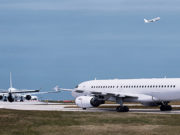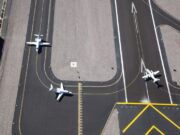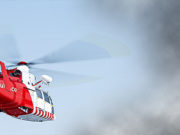Despite the high-profile crash of an Ethiopian Airlines Boeing 737 MAX, 2019 was among the safest years in commercial aviation history, the Aviation Safety Network (ASN) says.
The organization released its 2019 airliner accident data on Wednesday, listing a total of 20 fatal airliner accidents with 283 associated fatalities.
The data indicate that 2019 was the seventh safest year ever in terms of the number of fatal accidents and the third safest year in terms of fatalities. The safest year, according to ASN data, was 2017, when there were 10 fatal airliner accidents with 44 fatalities.
The total of 20 fatal accidents recorded in 2019 represented an increase over the five-year average of 14 fatal accidents; the 283 fatalities, however, represented a decrease from the five-year average of 480 fatalities.
Of the 20 fatal accidents, 13 were passenger flights, including the Ethiopian Airlines crash on March 10; all 157 passengers and crew were killed in the crash, after takeoff from Addis Ababa, Ethiopia, on a flight to Nairobi, Kenya. That accident, along with the fatal Oct. 29, 2018, crash of a Lion Air 737 MAX after takeoff from Jakarta, Indonesia, prompted the grounding of all Boeing MAX airplanes. Some 189 people were killed in the Lion Air crash.
Eleven of the 20 fatal accidents occurred in North America, compared with one North American crash in 2018 and three in 2017, according to ASN data. Of 2019’s 11 North American crashes, five occurred in remote or “rugged” areas in Canada and Alaska, ASN said, adding that “despite progress made through various safety initiatives by Canadian and U.S. regulators, this still is an area of concern.”
ASN estimated the 2019 fatal accident rate at one fatal accident per nearly 2 million flights — a statistic that ASN CEO Harro Ranter said indicates a significant improvement in aviation safety over the years.
“If the accident rate had remained the same as 10 years ago, there would have been 34 fatal accidents last year,” Ranter said. “At the accident rate of the year 2000, there would even have been 65 fatal accidents. This shows the enormous progress in terms of safety in the past two decades.”


